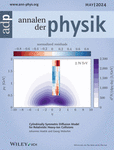Journal list menu
Export Citations
Download PDFs
Cover Picture
(Ann. Phys. 5/2024)
- First Published: 12 May 2024
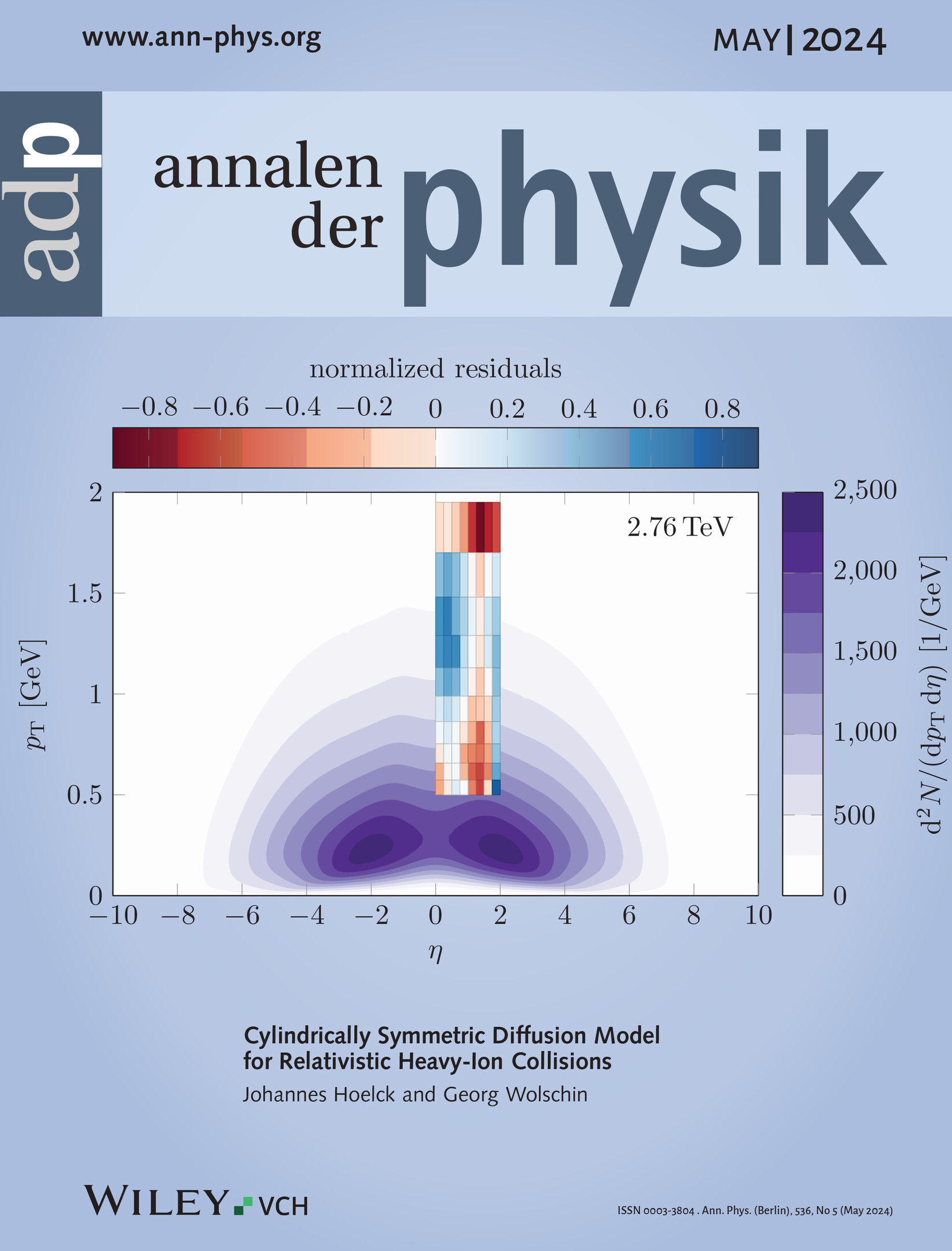
Diffusion Model for Relativistic Heavy-Ion Collisions
Relativistic heavy-ion collisions are a versatile tool to study the partial approach of a quantum many-body system towards statistical equilibrium. In article number 2300307, Johannes Hölck and Georg Wolschin present an explicit and rigorous derivation of the stochastic Fokker–Planck equation for the momentum distribution function of produced charged hadrons in longitudinal and transverse rapidities, thus placing the relativistic diffusion model on a firm statistical foundation. The model is used to analyse Pb–Pb collisions at energies reached at the Large Hadron Collider LHC. Detailed comparisons with data from the ATLAS and ALICE collaborations in transverse-momentum and pseudorapidity space are given.
Masthead
Perspective
Helmholtz, Schrödinger, and the First Non-Euclidean Model of Perceptual Color Space
- First Published: 12 January 2024
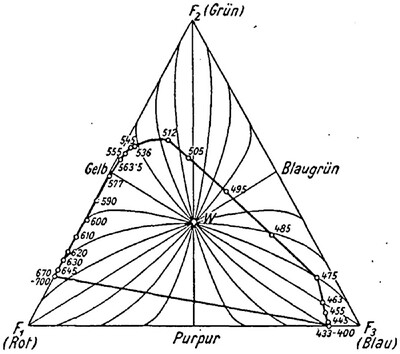
How does distance in color space translate into perceptual difference? In the late 19th century, Hermann von Helmholtz explored this question, combining psychophysics with non-Euclidean geometry to establish the first line element in color space. Despite years of obscurity, Helmholtz's work resurfaced in 1920 through the efforts of Erwin Schrödinger, who paved the way for a new research trajectory within color science.
Reviews
Application of Wavelet Methods in Computational Physics
- First Published: 10 January 2024
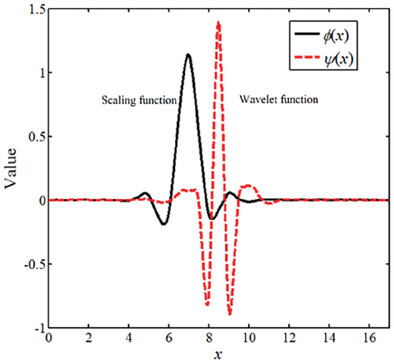
This article will start from the fundamental theory of wavelet Multiresolution Analysis and provide a brief summary of the advantages and limitations of various numerical methods based on wavelet bases. The objective of this article is to assist researchers in choosing the appropriate numerical methodologies for their particular physical issues. Furthermore, it will explore prospective advancements in wavelet-based techniques, offering valuable insights for researchers committed to enhancing wavelet numerical methods in the field of computational physics.
Review of the Gravitomagnetic Clock Effect
- First Published: 11 January 2024
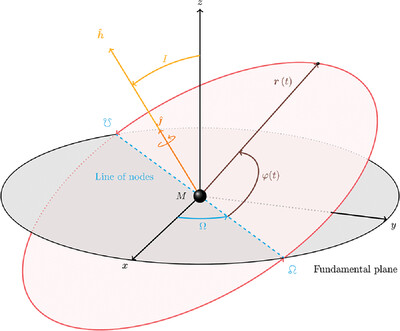
To the first post-Newtonian order, if two test particles revolve in opposite directions about a massive spinning body along two circular and equatorial orbits with the same radius , they take different times to return to the reference direction relative to which their motion is measured: it is the so-called gravitomagnetic clock effect, which is reviewed here.
Research Articles
Cylindrically Symmetric Diffusion Model for Relativistic Heavy-Ion Collisions
- First Published: 07 March 2024
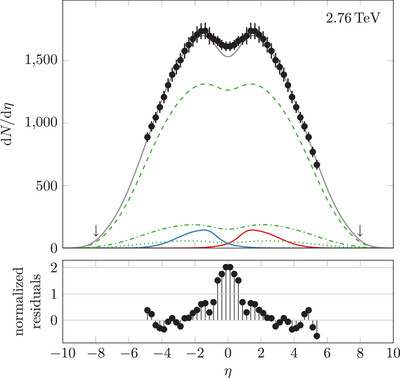
To account for particle production in relativistic heavy-ion collisions at the Large Hadron Collider, a relativistic diffusion model with cylindrical symmetry is derived from nonequilibrium–statistical considerations. It propagates an initial state based on quantum chromodynamics in time toward a thermal equilibrium limit. Calculated distribution functions in transverse-momentum and pseudorapidity space for pions, kaons, and (anti-)protons are compared with recent data.
Linear Polarization Conversion Based on Symmetry-Breaking in an Electromagnetically Induced Transparency Structure
- First Published: 05 December 2023
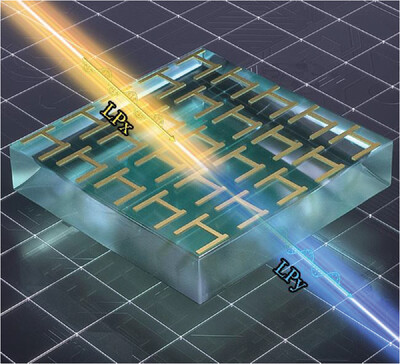
In this paper, a new structure is proposed, which realizes the combination of electromagnetically induced transparency and polarization conversion, and can realize ≈90° linear polarization conversion. This paper emphasizes the importance of breaking symmetry in realizing linear polarization conversion and verifies the feasibility of this method through simulation and mathematical analysis.
Magnetostatic Field Induced by Mechanical Deformations
- First Published: 12 December 2023
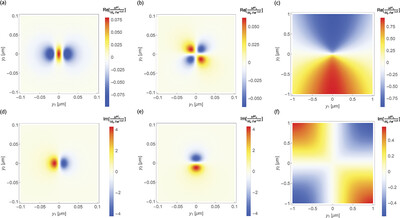
A closed-form formula for magnetostatic field generated by general mechanical deformations of a ferromagnetic material is derived. Its linearization with respect to the displacement vector is well-defined and used to calculate magneto-static fields arising from a rotation tensor component of acoustic waves for a uniformly magnetized film and a magnetic vortex in a disk.
Universal Highly Effective Entanglement Purification with Single-Copy Hyperentangled State
- First Published: 12 December 2023

A universal highly effective entanglement purification protocol with single-copy hyperentangled state (H-UHEPP) is proposed to enhance the quality of entangled state using simple unitary operations on polarization, spatial and time-bin degrees of freedom of a photon. It can speed up the entanglement purification process and reduce the resource consumption, and it has practical applications in quantum information processing.
Unidimensional Continuous Variable Quantum Key Distribution under Fast Fading Channel
- First Published: 14 December 2023
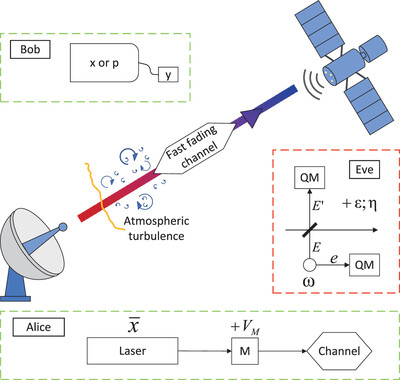
This paper analyzes the performance of a unidimensional continuous-variable quantum key distribution protocol using Gaussian-modulated coherent states under a fast-fading channel. It uses only one modulator for encoding and demonstrates its ability to tolerate a certain level of excessive channel noise while simplifying operations. This protocol has been proven to reduce costs within an acceptable range of performance losses.
Stoichiometry Effects on the Chemical Ordering and Superconducting Properties in TiZrTaNbNx Refractory High Entropy Nitrides
- First Published: 20 December 2023
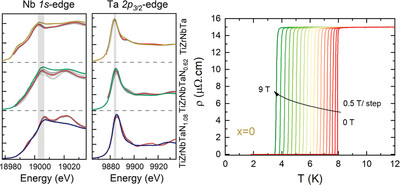
High-entropy materials are unexplored ground for superconductors. The effects of nitrogen stoichiometry on local structure, lattice distortion, and short-range order of TiZrNbTa-based thin films are investigated. The maximum superconducting transition temperature Tc is found at 10 K for a near-stoichiometric (TiZrNbTa)N1.08 film. The underlying electronic structure and chemical bonding in these high entropy nitrides influence the superconducting macroscopic properties.
A Modified Quasi-Classical Analysis to Capture the Effects of Strong Interaction in Open QED Lattices
- First Published: 24 December 2023
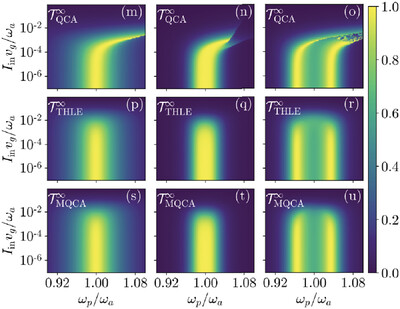
This paper studies the transmission of light through an array of 1D direct-coupled qubits and qubits side-coupled to a waveguide. The exact dynamics of the systems is studied using a truncated Heisenberg-Langevin equation approach and compared to a numerically simpler quasi-classical analysis for the models. The parameter range for the failure of quasi-classical analysis is identified and a modified quasi-classical analysis is developed for better results.
Purification for Hybrid Entanglement between Discrete- and Continuous-Variable States
- First Published: 04 January 2024
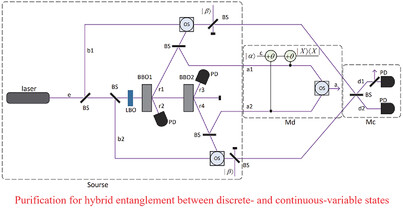
The hybrid entanglement purification protocol integrated with the generation of the hybrid entangled state (HES). The “Source” generates two pairs of desired HESs shared by Alice and Bob. Md and Mc are designed to make the parity checks for the discrete- and continuous-variable parts of the HESs, respectively.
Unidirectional Reflectionlessness and Transmissionlessness in Indirectly Coupled Whispering-Gallery Mode Resonators
- First Published: 04 January 2024

This work utilizes two whispering-gallery mode resonators embedded with Zeeman-split quantum dots to simultaneously achieve unidirectional reflectionlessness and transmissionlessness. The switching between them is achieved by modulating the coupling strength between whispering-gallery mode resonators and waveguides.
Deterministic Conversion of Hyperentangled States with Error-Heralded Quantum Units
- First Published: 07 January 2024
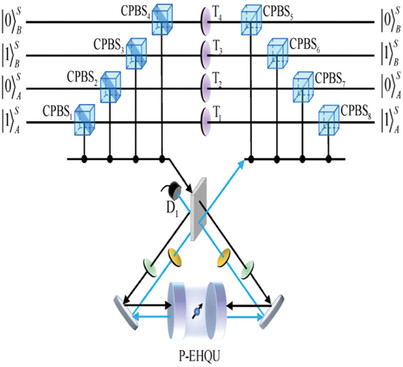
The two complete conversion possibilities from the two-photon hyperentangled Knill–Laflamme–Milburn (KLM) state to Bell states and three-photon hyperentangled KLM state to Greenberger–Horne–Zeilinger states hyper-encoded in polarization and spatial degrees of freedom assisted by error-heralded quantum units, respectively, are investigated. As the errors stemming from practically imperfect scattering are converted into efficacious responses of the detectors, the fidelities keep close to unity.
Broadband Airy Beam for Mid-Infrared Wave Enabled by Ge3Sb2Te6 Metasurface
- First Published: 08 January 2024
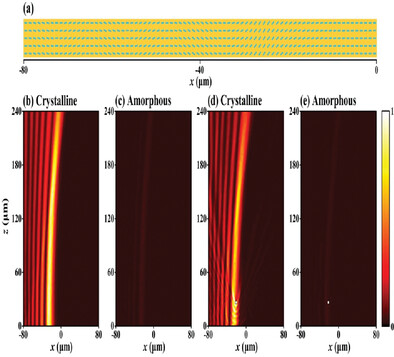
Ge3Sb2Te6 meta-atoms are designed for the generation of Airy beam. As crystalline Ge3Sb2Te6 is involved, cross-polarized wave is generated by meta-atom, and the corresponding PCR reaches 98% at 77.6 THz. As amorphous Ge3Sb2Te6 is employed, PCR is reduced to below 5%. As the state of Ge3Sb2Te6 alters, Airy beam generator can flexibly switch between on and off states.
Entanglement Generation in Capacitively Coupled Transmon–Cavity System
- First Published: 10 January 2024
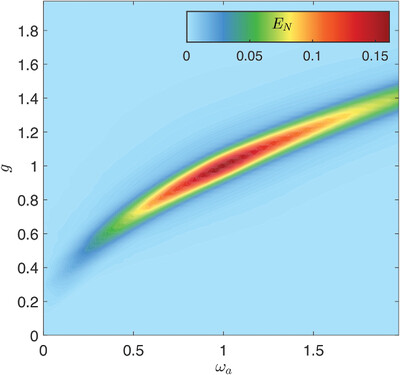
This study investigates continuous variable entanglement between a transmon qubit and a cavity in Quantum Electrodynamics (QED). It examines the effects of driving field intensity, coupling strength, and frequency on entanglement, providing insights for quantum information processing by demonstrating control over strong entanglement in cavity QED systems.




